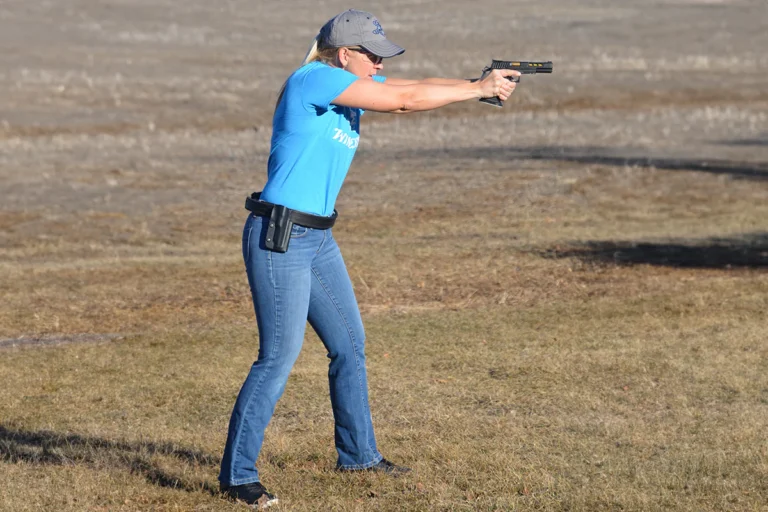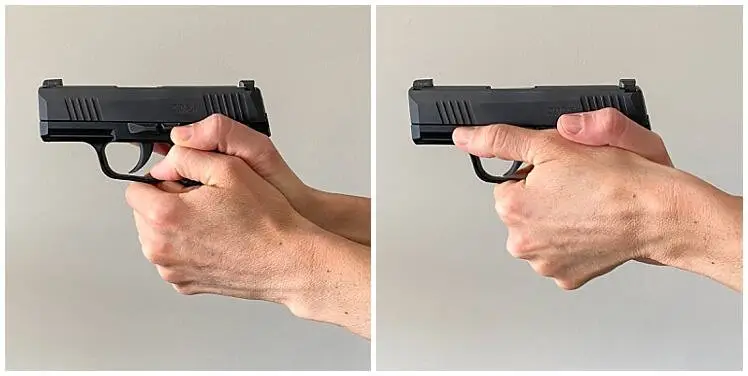You stand at the range. Your heartbeat climbs. You’re gripping a firearm for the first time. Every movement matters. Safety and control start with proper handling. You can’t master shooting until you master your stance, grip, and posture.
Before diving into advanced holding and aiming techniques, take a moment to review the, Most important gun safety rules for first-time shooters to ensure you’re practicing these basics correctly. That foundation protects you and your surroundings. Safe habits build true confidence.
Your goal as a first-time shooter is consistency. You don’t want to guess. You need a system. You need repeatable steps that lead to safe, accurate shots. These steps focus on three core areas: stance, grip, and trigger control. Master them in small increments.
Stance
Stand with your feet shoulder-width apart. Bend your knees slightly. Keep your weight balanced. Lean forward just enough to absorb recoil. Place your shooting foot slightly behind the other. This stance helps you manage firearm recoil while staying in control.
Keep your upper body engaged. Don’t lock your elbows. Let them flex. Watch your shoulders. Tension causes fatigue and poor aim. Relax them but remain alert. Your stance should feel natural, not rigid.

Grip
Your grip is your connection to the firearm. A weak or imbalanced grip produces wild shots. Focus on consistent pressure. Place your dominant hand high on the backstrap. Wrap your fingers firmly around the grip. Keep your trigger finger straight and off the trigger until you’re ready to fire.
Position your support hand to fill the open space on the other side of the grip. Stack your thumbs. Keep them below the slide. Maintain uniform pressure from both hands. Don’t crush the gun. Keep your wrists locked in place. A loose wrist leads to muzzle flip. A firm grip stabilizes the gun.

Trigger Control
Trigger control breaks down to two actions: placing your finger on the trigger and pressing it smoothly. Rest your finger on the trigger only when your sights are on target. That simple habit stops accidents before they happen.
Use steady pressure to squeeze the trigger straight back. Avoid jerking it. Jerking yanks the muzzle off target. Let the shot surprise you. Focus on the front sight. Exhale as you press. Follow through even after the shot breaks. Keep your grip secure. Regain sight alignment before the next shot.
Dry-Fire Drills
Practice without ammunition. Rack the slide. Confirm the chamber is empty. Use a safe backstop. Perfect your stance, grip, and trigger press. Build muscle memory. Identify errors. Train your eyes to track the front sight. Develop a consistent hold. Gun safety remains the priority, even in dry-fire exercises. Neglect nothing.
Recoil Management
Firearms kick. You manage it by leaning forward and maintaining a locked grip. Don’t tense every muscle. Let your body absorb the recoil. Stay calm. Return quickly to your sight picture. Each shot should look and feel the same. Repetition cements correct technique.
Correcting Common Mistakes
Check your grip if your shots drift left or right. Is your wrist stable? Are your thumbs aligned? Evaluate your trigger press if you shoot high or low. Are you yanking the trigger? Breathe and press smoothly. Adjust your stance if you feel off-balance after each shot. Are your shoulders square? Are your knees bent?
Keep a record of each training session. Identify patterns. Tweak and refine. This approach transforms guesswork into real improvement.
Mindset
Safe handling ensures you focus on hitting targets without risking mishaps. Practice every session. Don’t rush. Don’t rely on luck. Clear discipline produces consistent, controlled results. Firearms training relies on your commitment to every detail.
Ready for deeper training? Sign up for our online course. Master technique step by step. Track your progress. Build responsible shooting habits. Your investment in knowledge pays off in safety and skill. Move beyond the basics and become a confident marksman.
Legal Disclaimer:
The information on this blog is for educational purposes only and is not legal or professional advice. Firearm laws vary by jurisdiction. Always research and follow local, state, and federal regulations. Neither the author nor this blog assumes liability for actions taken based on the content provided. Seek qualified legal counsel and professional training for any firearm-related questions or concerns.